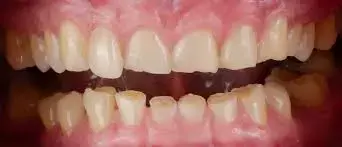- Home
- Medical news & Guidelines
- Anesthesiology
- Cardiology and CTVS
- Critical Care
- Dentistry
- Dermatology
- Diabetes and Endocrinology
- ENT
- Gastroenterology
- Medicine
- Nephrology
- Neurology
- Obstretics-Gynaecology
- Oncology
- Ophthalmology
- Orthopaedics
- Pediatrics-Neonatology
- Psychiatry
- Pulmonology
- Radiology
- Surgery
- Urology
- Laboratory Medicine
- Diet
- Nursing
- Paramedical
- Physiotherapy
- Health news
- Fact Check
- Bone Health Fact Check
- Brain Health Fact Check
- Cancer Related Fact Check
- Child Care Fact Check
- Dental and oral health fact check
- Diabetes and metabolic health fact check
- Diet and Nutrition Fact Check
- Eye and ENT Care Fact Check
- Fitness fact check
- Gut health fact check
- Heart health fact check
- Kidney health fact check
- Medical education fact check
- Men's health fact check
- Respiratory fact check
- Skin and hair care fact check
- Vaccine and Immunization fact check
- Women's health fact check
- AYUSH
- State News
- Andaman and Nicobar Islands
- Andhra Pradesh
- Arunachal Pradesh
- Assam
- Bihar
- Chandigarh
- Chattisgarh
- Dadra and Nagar Haveli
- Daman and Diu
- Delhi
- Goa
- Gujarat
- Haryana
- Himachal Pradesh
- Jammu & Kashmir
- Jharkhand
- Karnataka
- Kerala
- Ladakh
- Lakshadweep
- Madhya Pradesh
- Maharashtra
- Manipur
- Meghalaya
- Mizoram
- Nagaland
- Odisha
- Puducherry
- Punjab
- Rajasthan
- Sikkim
- Tamil Nadu
- Telangana
- Tripura
- Uttar Pradesh
- Uttrakhand
- West Bengal
- Medical Education
- Industry
Automated method for monitoring tooth wear progression faster and accurate for full-arch intraoral scanning : Study

An automated method for monitoring tooth wear progression faster and more accurately for full-arch intraoral scanning suggests a study published in the Journal of Dentistry.
This study aimed to develop and evaluate a fully automated method for visualizing and measuring tooth wear progression using pairs of intraoral scans (IOSs) in comparison with a manual protocol. Eight patients with severe tooth wear progression were retrospectively included, with IOSs taken at baseline and 1-year, 3-year, and 5-year follow-ups. For alignment, the automated method segmented the arch into separate teeth in the IOSs.
Tooth pair registration selected tooth surfaces that were likely unaffected by tooth wear and performed point set registration on the selected surfaces. Maximum tooth profile losses from baseline to each follow-up were determined based on signed distances using the manual 3D Wear Analysis (3DWA) protocol and the automated method. The automated method was evaluated against the 3DWA protocol by comparing tooth segmentations with the Dice-Sørensen coefficient (DSC) and intersection over union (IoU). The tooth profile loss measurements were compared with regression and Bland-Altman plots. Additionally, the relationship between the time interval and the measurement differences between the two methods was shown.
Results: The automated method completed within two minutes. It was very effective for tooth instance segmentation (826 teeth, DSC = 0.947, IoU = 0.907), and a correlation of 0.932 was observed for agreement on tooth profile loss measurements (516 tooth pairs, mean difference = 0.021mm, 95% confidence interval = [-0.085, 0.138]). The variability in measurement differences increased for larger time intervals. The proposed automated method for monitoring tooth wear progression was faster and not clinically significantly different in accuracy compared to a manual protocol for full-arch IOSs. General practitioners and patients can benefit from the visualization of tooth wear, allowing quantifiable and standardized decisions concerning therapy requirements of worn teeth. The proposed method for tooth wear monitoring decreased the time required to less than two minutes compared with the manual approach, which took at least two hours.
Reference:
Niels van Nistelrooij, Eva Maier, Hilde Bronkhorst, Luuk Crins, Tong Xi, Bas A.C. Loomans, Shankeeth Vinayahalingam. Automated monitoring of tooth wear progression using AI on intraoral scans, Journal of Dentistry, Volume 150, 2024, 105323, ISSN 0300-5712, https://doi.org/10.1016/j.jdent.2024.105323.
Dr. Shravani Dali has completed her BDS from Pravara institute of medical sciences, loni. Following which she extensively worked in the healthcare sector for 2+ years. She has been actively involved in writing blogs in field of health and wellness. Currently she is pursuing her Masters of public health-health administration from Tata institute of social sciences. She can be contacted at editorial@medicaldialogues.in.
Dr Kamal Kant Kohli-MBBS, DTCD- a chest specialist with more than 30 years of practice and a flair for writing clinical articles, Dr Kamal Kant Kohli joined Medical Dialogues as a Chief Editor of Medical News. Besides writing articles, as an editor, he proofreads and verifies all the medical content published on Medical Dialogues including those coming from journals, studies,medical conferences,guidelines etc. Email: drkohli@medicaldialogues.in. Contact no. 011-43720751


